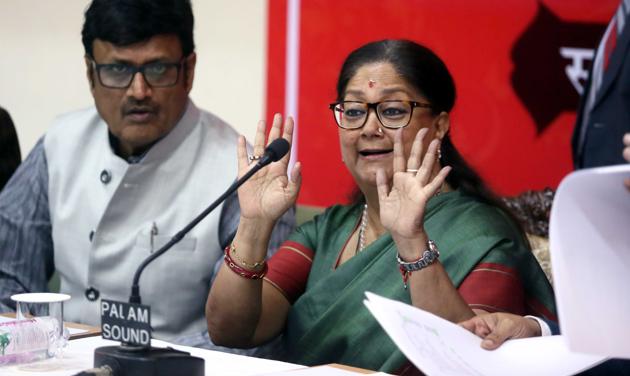Why 2019 isn’t quite a done deal for the BJP | By Rajdeep Sardesai
The party’s defeat in the Rajasthan by-polls suggests that the saffron surge of 2014 may be beginning to slow down
February is arguably the nicest month weather-wise in the national capital. The icy Himalayan wind gives way to a gentler breeze signalling a gradual change of seasons. This time, it also marks a possible shift in political temperature ahead of a big election year with the Congress suddenly finding its voice on a range of issues from the economy to the Rafael aircraft deal even as the aura of invincibility around the ruling leadership is eroded.

Two by-election results in Rajasthan appear to have been the immediate trigger for the shift in political momentum. Resounding victories for the Congress in the Lok Sabha seats of Alwar and Ajmer (the party led in all 16 assembly segments) suggest that 2019 may not quite be 2014. Remember, the BJP swept all 25 seats in Rajasthan in the 2014 general elections, part of a north-west India wave stretching from Goa to Jharkhand that propelled the party to a remarkable majority on its own. Now, the defeat in Rajasthan suggests that the saffron surge of 2014 may be beginning to slow down.
But is Rajasthan a mirror to the rest of India, or merely an aberration? The BJP’s mascot in the twin Rajasthan elections was not Narendra Modi, but the state chief minister Vasundhara Raje. To that extent, the by-election results would suggest mounting anti-incumbency against the state government. Rajasthan, after all, has a history in recent times of voting out the incumbent government every five years.
And yet, the BJP leadership can no longer be complacent. The agrarian distress is real and nationwide. Farmers have been temporarily placated with budgetary promises but translating the promise into delivery is this government’s biggest challenge. The promise of 10 million new jobs a year is clearly not happening, and wrapping it up in a plate of ‘pakodas’ is not going to address the ambitions of India’s young. So far, the growing disillusionment of the unrealised ‘achche din’ has not turned to anger, but that, too, can change in the next 12 months if there is no visible improvement on the ground.
One sign of the shifting mood is reflected on social media, the echo chamber of contemporary urban political discourse. Where once the BJP and Modi in particular ruled cyberspace, now there are Modi jokes that are going viral. The union budget, far from stemming the tide, has only aggravated the sense of disquiet. For the urban middle class in particular, the budget offers little hope that their wallets will have a distinct bulge in the immediate future.
Which might also explain the growing belief that the Modi government is seeking to quickly shift the political narrative away from the economy to more emotional issues revolving around religious nationalism. That the East Delhi BJP MP Mahesh Giri has chosen to launch a Rashtriya Raksha Yagna in a week when there has been yet another major terror attack in Jammu is not without significance: the ‘maha-yagna’ is a conscious attempt to stir a religio-national fervour ahead of the election season. The RSS chief has already offered his swayam-sevaks for border protection ‘if the constitution permits’. The VHP has also announced its plans to reignite the Ram Mandir issue even as the Supreme Court hears the contentious dispute. The early signs from Karnataka too suggest that the BJP is looking to create a Hindu consolidation by raising the familiar bogey of Muslim appeasement.
And yet, whether an unapologetic old-style Hindutva politics can deliver the spectacular results of 2014 for a ‘new’ India is uncertain. That election triumph was driven by strong public anger against the ruling Congress-led UPA with Modi’s muscular image embodying the face of change. That image has been dented but remains well ahead of what Rahul Gandhi and the opposition have to offer so far. A fragmented opposition may well be Modi’s ticket to a second term in power. He is still the consummate election campaigner who will determinedly make the general elections a presidential contest between him versus Rahul and the rest. And yet, while the prime minister’s supporters seek to keep his larger than life image intact, the Indian voter has a history of eventually slicing through the rhetoric. Indeed, what appeared a done deal just months ago is no longer guaranteed. The battle for 2019 has only just begun.
Post-script: A senior Congress leader in parliament insisted before a large group of journalists that Modi would not be prime minister unless the BJP got 220 seats on its own in 2019. That the remarks were made within earshot of several MPs from the BJP’s increasingly restive allies was interesting. Is 220 the new 272 and can Modi lead a genuine coalition government? Those are the questions that are still blowing in the February wind.
Rajdeep Sardesai is a senior journalist and author
The views expressed are personal





